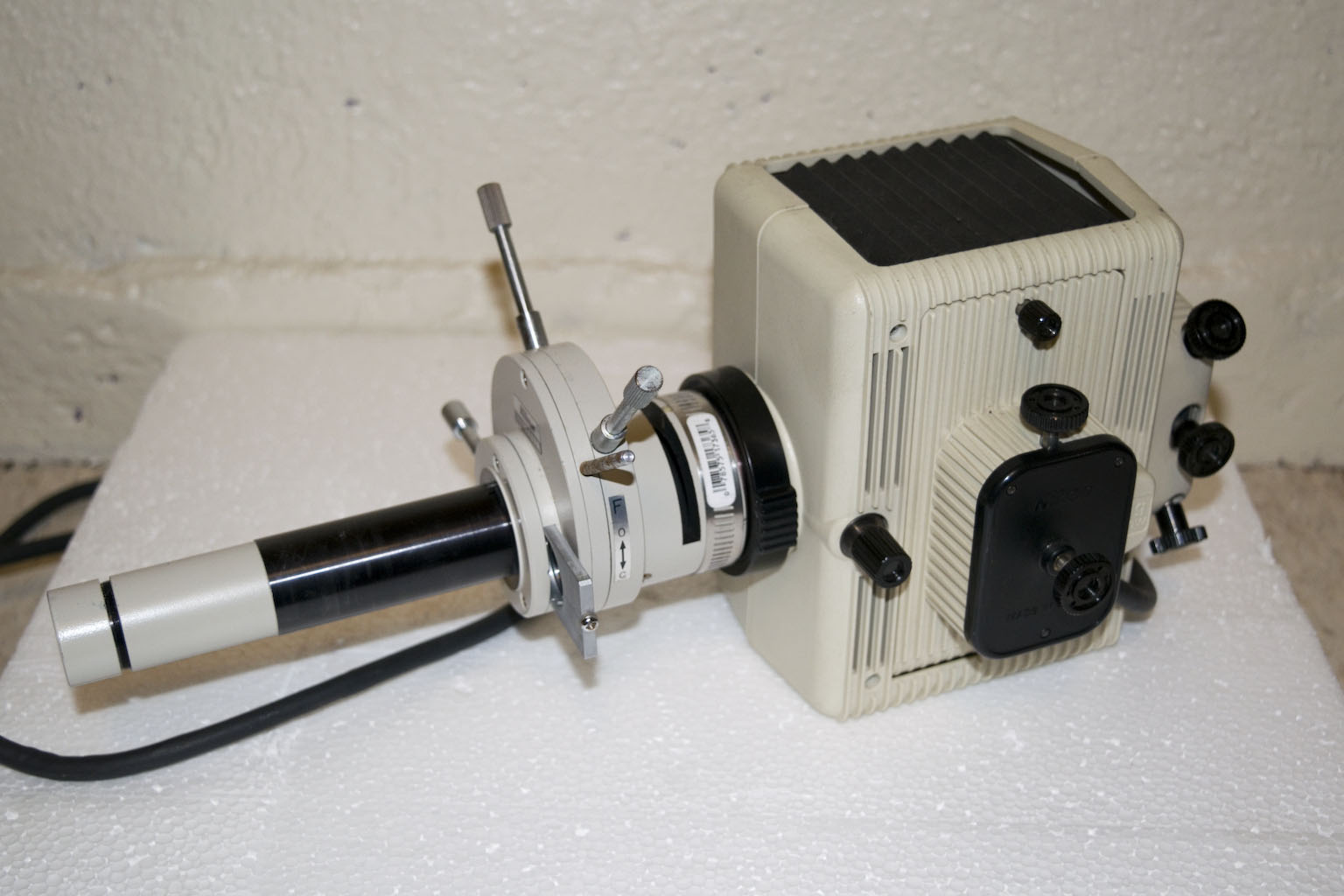

The mercury arc lamp system is comprised of several components that all must work together (at the same time, preferably!) to obtain the best results. They include the power supply, bulb, lamp holder / translator, reflector mirror and alignment system, iris and centering system, filters and a beam block.
For Nikon microscopes, there are at least two types of mercury lamphouse, one with the bulb horizontal, and the other vertical. There are also no less than three power supply connections, which must match the power supply.












The bulbs themselves are fairly small arc lamps, being a little less than 4 inches long (100 mm). Once turned on, it is best if it is left on for at least 15 minutes before turning it off.
While there are special objectives (as seen below) to help with lamp alignment, I find it more convenient to simply look at the beam on a piece of paper, with no objective.

By itself, the lamp is useless - it has to attach to the microscope with a beamsplitter arrangement to direct the light towards the specimen. With the Diaphot, this is accomplished with two parts - an accessory which attaches through the hole in the back of the unit that gets the light into the system, and the addition of a fluorescence cube in the built-in filter holder. The accessory is shown below.


The components are: the bayonnet mount which couples to a REN spacer (a glass filled epoxy resin, which is easily machined) that helps to limit the thermal conductivity into the body of the microscope, a centerable iris, a beam block and a lens at the end of the tube. It is fairly common to find these units with the REN part either broken (as was the case here - hence the hose clamp to help hold it together) or missing entirely. Use care when purchasing these on eBay!